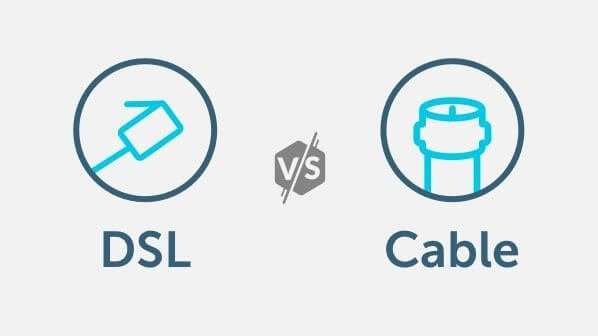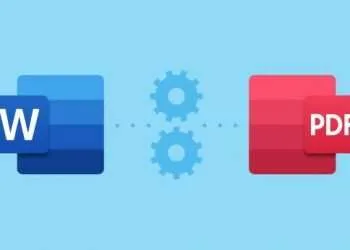Nowadays, the most widely used physical wires for the internet are Cable, DSL, and Fiber.
If we compare these three categories, the downloading and uploading speed of fiber internet is greater than cable and DSL. The speed of the fiber internet connection is almost 250-1000 Mbps, whereas, the downloading speed provided by cable and DSL internet connection varies between 25-500 Mbps. Moreover, their uploading speed is slower i.e. 5-30 Mbps. So, even if fiber internet services are more expensive they are worth it because of their speed and reliability factors.
Now, if we specifically talk about Cable and DSL internet. Cable relies on coaxial wires that are capable of carrying more bandwidth. Whereas, DSL still relies on telephone wires. The average speed of DSL services is 25-100 Mbps, which makes half of the speed of cable services. In some urban areas, DSL can give faster service as some service providers start providing services by building lines. This infrastructure is called ‘Fibre to the Node’.
As mentioned earlier, DSL uses telephone lines, but it won’t interrupt your telephone usage. It remains the most sluggish of all other modems or types of the internet available on the market. Cable, however, depends on the same wires that your TV service providers are using. DSL cannot even compete with cable. Cable provides more speed than most of the other services. The plus point is that it is widely available, unlike the rare availability of fiber internet. Although, fiber is a revolutionary development in terms of data transfer. Fiber optics are constituted of small glass fibers through which data travels at the speed of light. Still, the minus point remains fiber, which is its unavailability. AT&T’s gigabit service provider is one of the examples of Fiber service providers.
Summary of Cable Internet
The average downloading speed of cable internet is 10-500 Mbps while the average uploading speed is 5-50 Mbps. In some specific areas, fibers can be more than mentioned speeds, but mostly you will get cable services at these speeds.
Moreover, the speed may slow down at peak times, when the overall usage increases. It means you may experience a 20% decline in speed when people in your locality are supposed to be home after work.
Most of the cable service providers which include Xfinity, Spectrum, and Cox also provide TV services. They provide amazing discounted plans for users who take both TV and internet services. But, that entirely depends on your location, you should enter your zip code to find out the available Internet Service Providers and what promotional deals they are offering. You can check the website LocalCableDeals.com for finding the best internet packages in your area.
As mentioned earlier, bundling up the services come with a lot of perks and great discounted rates as ISPs encourage their customers to take all the services from them. Moreover, it also benefits the consumers, not only do they get discounted deals but they pay one bill for multiple services.
One more thing to add is that its latency is lower than DSL, whereas bandwidth is higher than DSL.
Summary of DSL internet
Mostly, the downloading speed of DSL is 5-35 Mbps and the uploading speed is 1-10 Mbps.
DSL service is offered by the same companies that provide telephone services, e.g. AT&T and CenturyLink. Often they give packages with both telephone and internet services included in them.
Cable and fiber internet connections are comparatively faster than DSL. But, DSL is less costly than these two.
For rural areas, DSL internet is the only option available.
Its latency is higher than cable, while it’s bandwidth is lower than cable.
Also, it’s speed depends on your distance from the internet service provider’s office.
Final Thoughts
Internet connection/service has evolved with time, once the only connection we knew was connected with our landline, known as a dial-up internet connection to DSL. DSL not only elevated the game of the internet worldwide but brought speedier, reliable, and advanced internet connections. Cable internet and then gradually introducing Wi-Fi, making everything wireless to 3G, 4G, and 5G internet connection just around the corner to change the dynamics of the online world.















